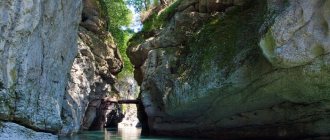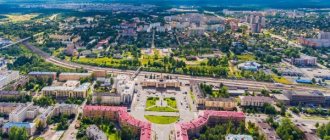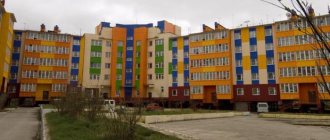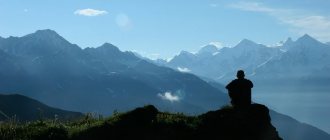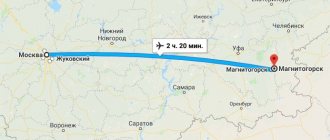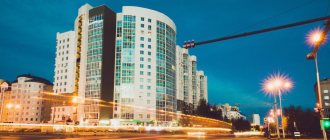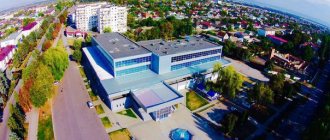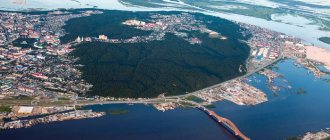The main attractions of Mari El
The Republic of Mari El is one of the constituent entities of the Russian Federation and is part of the Volga Federal District.
It neighbors the Kirov and Nizhny Novgorod regions, the Chuvash Republic and the Republic of Tatarstan. The total area of the republic is 23,375 km/sq.
The capital of the republic is the city of Yoshkar-Ola. The population of the republic is about 680 thousand people. The first mentions of this nation are found in historical sources dating back to the 10th century.
Republic of Mari El on the map of Russia
The capital is the city of Yoshkar-Ola, the republic borders the Kirov region in the north and east, the Nizhny Novgorod region in the west, the border with the Chuvash Republic in the southwest, and the Republic of Tatarstan in the southeast.
Mari-El is located in the middle reaches of the Volga River, in the east of the East European Plain. Its main territory is located on the left bank of the Volga, on the right bank there is only part of the Gornomariysky district, one of 14 districts, they can be seen on the map.
Districts on the map:
The area of the republic is about 23,375 square meters. kilometers, the population as of July 31, 2022 is about 685 thousand people.
In the capital, the city of Yoshkar-Ola, and throughout the territory, Moscow time is the same as in Moscow, the capital of Russia.
Excavations on Mount Alamner
The total area of the archaeological site is 82,400 sq.m., the excavated area is 2,300 sq.m. In plan, the fort has an irregular shape. Its length from west to east is 270 m, its width at the rampart is 270 m, closer to the cape it is 150 m. It has been established that the original height of the rampart was about 5 m. Before construction began, the earth was burned out, and small stones were used to strengthen the lower layers and sandstone. The soil for the filling was taken from the ditch. Then wooden structures were installed on the prepared surface, which were filled with river silt and clay.
Access to the territory of the fort was possible through a gate in the north-eastern part of the fortress, protected by a square tower. The width of the ditch was 710–730 cm, the depth was 195 cm. In the area of the passage to the shaft, stakes were driven at the bottom. In addition to defensive structures on the sloping side, there were also fortifications on the cape - a rampart and a smaller ditch.
© Sergey Makarov
In 2004, the remains of the settlement's housing complex were discovered. The ancient above-ground dwelling was a small square house with an area of 27 square meters. m. The diameter of the logs was at least 20 cm. The lower crowns of the frame were laid on the ground without any foundation. No traces of wall connections were found. Perhaps the house was cut into a corner, where the remaining cracks were simply covered with clay.
The main part of the finds is ceramics. Over the entire period of excavations, more than 10 thousand fragments of clay products were discovered. Also found in the cultural layer of the settlement were jewelry, tools, household items, weapons, and even a musical instrument resembling a “Jew’s harp.” All of them are made of ferrous or non-ferrous metal and bone.
A little history
The Mari Autonomous Region was formed on November 4, 1920, and on December 5, 1936 it became known as the Mari Autonomous Republic. Since October 22, 1990 - the Mari Soviet Socialist Republic (MSSR) as part of the RSFSR.
The modern name of the republic: Mari Republic - Mari El since December 9, 1992, legalized and came into force on January 12, 1993 from the moment of publication of the Law of the Russian Federation.
This is a multinational republic, national holidays of the Mari people are celebrated here, as well as Russian, Chuvash, Tatar holidays, and many festivals are held every year.
You can read about the sights and rich nature of Mari El on this page
My friends vacationed here and shared some of their photographs and memories of their vacation in Mari El in the summer in the Mari open spaces, among the rich and generous nature. They also attended one of the holidays - Benderiad, which is fun and interesting every summer.
Republic of Mari El photo
My native country is wide...
The harvest is ripening in the fields:
It’s good to take a ride through the vast expanses and see the ancient beauty that is carefully preserved here.
Beautiful rustic windows with carved frames:
Cathedral of the Smolensk Icon of the Mother of God in the city of Kozmodemyansk, the center of the Gornomariysky district:
Route
From above, Alamner is a large flat area with fields sown with wheat. On the cape itself there are lawns equipped for barbecue. There is no firewood nearby; you can buy it in nearby villages. The observation deck is easily accessible by car; there is a dirt road along the perimeter of the hill. But entry is only possible from the flat side.
Mount Alamner coordinates: 56.229782, 46.689829
There are two ways to get to Alamner. The first option is from the side of the villages of Vazhnangen and the villages of Artyushkino. To do this you need to ford the river. Bolshaya Sundyrka (it is shallow, with a good bottom). And then climb up the mountain along a winding road. It is not so easy to drive it, especially with a low suspension.
© Vladimir Ponomarev
The second passage comes from the village of Krasnaya Gorka. In this case, there is no need to cross the river and climb the mountain. The road through the field is smooth, you can drive through it without any problems using any vehicle. In addition, the places are very beautiful, there are wild apple trees around, and there are a lot of mushrooms in season.
Holidays in Mari El
Many festivals and holidays are held in cities and the capital Yoshkar-Ola at different times of the year. In the summer in June, the republican national holiday Peledysh payrem - translated from Mari as the Flower Festival, during which the results of spring field work are summed up and mass festivities take place throughout the Mari region.
The interregional folklore and ethnographic holiday Land of Ancestors is held in July in the village of Arda, Kilemar region. the Baranka music festival takes place in the city of Volzhsk in memory of the famous musician.
We will visit the Benderiad Festival of Satire and Humor , which has been celebrated since 1995. The center of the festival is the city of Kozmodemyansk, people with a good sense of humor and a wonderful mood come here from everywhere. A carnival procession takes place through the streets of Kozmodemyansk. An auction of “12 chairs” is held on Market Square, where you can buy a “chair with diamonds”; a chess tournament is certainly held. There are performances by comedians, music concerts, and discos throughout the city.
One of the main participants of Benderiada:
Details
Interesting facts about the Republic of Mari El
* In ancient times, the Mari were called “Cheremis”.
The exact origin of this name is unknown. * Ethnographically, the Mari are divided into three groups - mountain, meadow and eastern
* The Mari are called the last pagans of Europe
* Mari writing originated only in the 18th century
* In the Republic of Mari El, two language norms are widespread on equal terms - the Mountain Mari language and the Meadow-Eastern Mari language.
* There is a group of northwestern Mari living in the Nizhny Novgorod and Kirov regions. Their language is very different from other Mari languages. Their folk writing appeared only in 2005!
* Mari people began to be drafted into the army under Peter the Great
* The largest group of Mari lives in Bashkiria - approximately 103 thousand people
* The city of Yoshkar-Ola, as the capital of Mari El, was founded by decree of Tsar Fyodor Ioannovich in 1584. Initially it was called Tsarevokokshaysk, then Krasnokokshaysk, and at the beginning of the 20th century - Yoshkar-Ola.
* In 1936, large-scale industry began to develop on the territory of the republic
* In 1972, the first university opened on the territory of the republic - MarSU (Mari State University).
Main attractions of the Republic of Mari El
Like any region of the Russian Federation, the Mari Republic has its own unique characteristics and advantages.
These include unique nature, rich national culture (customs, traditions and folk crafts), as well as many historical and cultural monuments. We present to your attention the most interesting sights of the republic.
Sheremetev Castle
This magnificent architectural ensemble is located two hundred kilometers from Yoshkar-Ola, in the village of Yurino, on the banks of the Volga.
In 1812, the village of Yurino was acquired by the landowner Vasily Sergeevich Sheremetev, the great-nephew of the famous Count Sheremetev. Over the years, many famous architects were involved in the construction of the castle - R. Muller, A. Parlant, A. Korsch, A. Stern, S. Radionov, P. Malinovsky.
Construction of the castle lasted from 1874 to 1915. It would not be an exaggeration to say that the builders of the castle managed to create a true masterpiece of architecture of that time.
The entire estate was created in the style of a palace and park residence. The palace looks very harmonious, despite the combination of Gothic and traditional Russian styles. During construction, many expensive materials were used - granite, marble and valuable wood.
The interior decoration matches the appearance of the castle. In total, the palace has more than 100 rooms and each has its own style. Many rooms have luxurious mosaic decoration. The halls, designed in Arabic style, are especially beautiful. The winter garden is very beautiful, accessed by a large spiral staircase. It is very wide, with columns, decorated with ancient Greek amphorae and live plants in pots. The weapons hall is of great interest to tourists. It displays a large and rich collection of weapons - from medieval to weapons of the 19th century. There are such halls as “Picture Gallery”, “Oak Room”, “Eastern Cabinet”, “Skobelevsky Hall”.
The palace grounds are superbly landscaped. The total area of the estate complex is 45 hectares. In addition to the palace, the stone fence, some service buildings, as well as the ground floor and landscape ponds are well preserved.
There is a large park around the castle, consisting of two parts - northern and southern. You can admire fountains, decorative flowers, birch, spruce and pine trees, and various landscape panoramas. In the walking area there are pedestrian paths with green lawns along them.
In the nineties of the last century, the estate was very neglected. Fortunately, restoration of this historical site began, which continues to this day. Part of the castle is used as a hotel complex.
The estate is one of the architectural monuments of federal significance
The best museums of the Republic of Mari El
* Tsarevokokshay Kremlin in Yoshkar-Ola
Located on Voznesenskaya street. It was built in 2009. In former times, there was an ancient wooden fortress in its place. Nothing has survived from it to this day. In the 19th century there was a city market square, in Soviet times Revolution Square. The construction of the Kremlin perpetuated the memory of this historical place.
The architectural ensemble of the Tsarevokokshay Kremlin includes the Cathedral of the Resurrection of Christ, an archaeological museum and a monument to Fyodor Ioanovich.
You can also view the exhibitions that are located in the open air. The Kremlin Archaeological Museum has an interesting exhibition of archaeological finds, weapons, ancient coins and jewelry. Information stands with historical documents and photographs about Yoshkar-Ola are installed in special niches of the Kremlin.
* Yezhov Myrrh-Bearing Monastery
This monastery is located 20 km from Yoshkar-Ola, in the village of Ezhovo. It was founded by decree of Tsar Alexei Mikhailovich in 1647. Initially it was male.
During construction, the Church of the Holy Myrrh-Bearing Women, cells and households were erected. the buildings. In 1719, construction of a new monastery stone church was completed. This temple is a monument of federal significance.
In 1924, the authorities closed the monastery. In Soviet times there was an orphanage there, and then state farm workshops.
The monastery was revived only in 1993. Restoration and repair work was carried out, and the monastery became operational, only as a women's monastery.
The monastery has miraculous shrines.
* Theotokos St. Sergius Hermitage
Located in the Kilemar district of Mari El, in the village of Kumya. Construction of this monastery began in 1997.
This monastery became a historical continuation of the nunnery, which was opened in 1888. All buildings of this iconic complex are made of wood.
Festival of satire and humor Benderiad in Kozmodemyansk
There is a lot of entertainment for children on the Market Square of Kozmodemyansk:
A large, elegant Children's Town for the delight of children:
Ostap Bender's performance in the festive humor:
The festival continues on the banks of the Volga - yachts and parachutists take part in the celebration:
I suggest you watch a cool movie:

